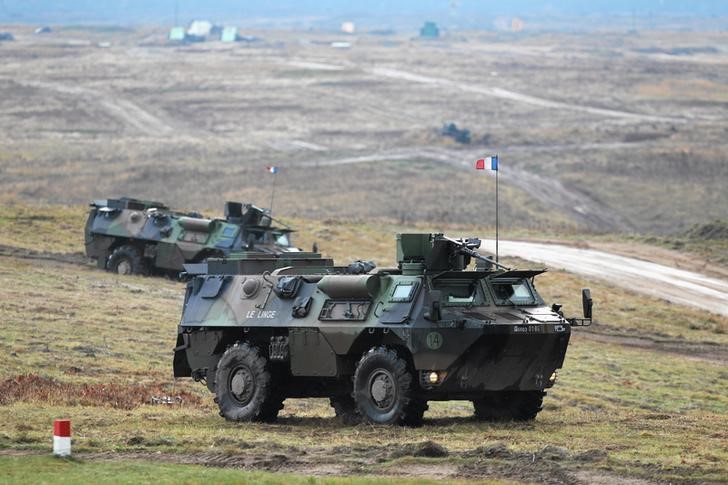US stock futures inch lower after Wall St marks fresh records on tech gains
Investing.com - NATO leaders agreed to a new higher defence spending target at a summit in The Hague last week, and ING sees this increased spending by European countries hitting households hard.
The NATO members agreed to spend 5% of their economic output - or Gross Domestic Product - on core defence and broader defence and security-related investments.
That’s a hefty increase on the current goal of 2%, which was approved at an alliance summit in Wales in 2014.
Increased European defence spending has a potential economic upside, said analysts at ING, in a note.
The European Commission sees GDP growth 0.3-0.6% higher by 2028, while the Kiel Institute for World Economy estimated a 0.9% to 1.5% GDP effect of defence spending going from 2% to 3.5% of GDP.
“We are with the European Commission on the lower side of the estimate,” said ING. “The high import share is the most important reason … We expect additional spending to be more oriented towards equipment, where underinvestment has been significant. For the economic impact, it’s important that of all the military equipment to support Ukraine, 78% was acquired from non-EU producers, so the import share of the additional spending will be high.”
The positive GDP effect is higher if the additional spending is debt-financed, which we expect to be the case for the first couple of years, ING added. This approach makes sense, as budget cuts or tax increases are usually politically painful, while the high import share would risk switching domestic consumption for imports, denting the economy.
However, over time, there’s no economic justification for higher European deficit norms because of higher defence spending, ING added.
“It will be recurring government spending, so it should be covered by recurring government income or cuts to spending elsewhere. This implies that over time, the positive effect on GDP will come down versus the 2028 effect.”
So the upside for the economy is limited.
Additionally, European countries currently spend about 2% of their GDP on defence, and that will go to somewhere between 3.5% and 5% of GDP.
This implies one of two options: it cannot be spent on healthcare, social security or education and comes in the form of cuts to these areas. Alternatively, it can come in the form of higher taxation, so European consumers will be spending less on other stuff.
“In practice, it will probably be a mix of the two. But make no mistake, European households will pay for it,” ING added.
